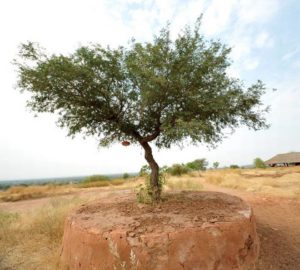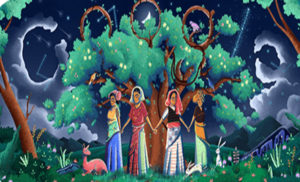The tale of the revolutionary Chipko Movement
Having been an inspiration to many across generations, this pioneering movement to save trees in India was also one of the most popular environmental uprisings in the country, one that often finds a mention in history books.
In the small villages of Rajasthan (north India), where the Bishnoi community resides, a rather moving and historic uprising took place in the 18th century. The members of the community, all got together to hug trees and prevent them from being chopped. The Khejri trees were being cut on the order of the king of Jodhpur (a city in Rajasthan), who later and as a result of the movement, gave a royal decree preventing cutting of trees in all Bishnoi villages. However, this was only after a group of villagers had lost their lives trying to save the trees.
This movement was a non-violent one and so effective that it inspired others in even centuries later. The Chipko Movement, which started in April 1973 in a village in Uttarakhand (then part of Uttar Pradesh), was inspired from the Rajasthani movement.
The movement got its name due to peoples’ action of hugging trees in order to prevent them from being chopped. Chipko is derived from a Hindi word that means to stick. Villagers stuck to the trees and also their motive of carrying out the protest in a peaceful way.
Also Read – Non-cooperation movement.
The Chipko Movement, which was a revolt against forest loggers trying to chop trees and hence perturb the ecological balance, followed Gandhian philosophy of peaceful resistance.
The movement also found its way to other Himalayan districts of the state. Upset by a government decision to allot forest land to a sports goods company, villagers embraced the trees in the area. Along with local women and spearheaded by Chand Chandi Prasad Bhatt and his NGO Dasholi Gram Swarajya Sangh, this modern Chipko Movement also saw success, inspiring many across the nation with the cause and its non-aggressive approach.
A Gandhian activist and renowned environmentalist Sunderlal Bahuguna also gave direction to the movement and persuaded Indira Gandhi, the then Prime Minister of India, to ban cutting of trees.
Irony of the roots
It was a lady named Amrita Devi of Khejarli village and her three young daughters, who sacrificed their lives to protect the Khejri trees. Considered sacred, the trees were being brought down at the orders of the ruler of Marwar, Maharaja Abhay Singh, who wanted to build his new palace in the forest.
Two centuries on, the trees whose protection cost hundreds of lives, are dwindling due to factors like low groundwater level, fungal attacks, indiscriminate cutting, etc.
In 2015, a report by the Central Arid Zone Research Institute (CAZRI) said that the number of Khejri trees per hectare in the 12 dry districts of Rajasthan had declined alarmingly.
The Khejri tree is considered auspicious by the people of Rajasthan, especially the Bhishnoi community, who worship it. The tree also holds a significant economic and environmental importance as it plays a vital role in maintaining the ecosystem of the dry Thar region. Not just the tree can survive the odd of the weather in the hot region, for locals it is also a source of firewood and fodder for the cattle and helps in sustaining the nutrient value of the soil and ensuring a good yield.
Google Doodle today celebrates the 45th anniversary of Chipko Movement through its artwork.
“The Chipko Andolan also stands out as an eco-feminist movement. Women formed the nucleus of the movement, as the group most directly affected by the lack of firewood and drinking water caused by deforestation,” Google said.
Today’s doodle is illustrated by Svabhu Kohli and Viplov Singh and it celebrates the bravery and perseverance of all of the ecological protectors across the globe, and thanks them for their endeavors, said Google.
“The power of protest is an invaluable and powerful agent of social change. Take some time to hug your favourite tree-hugger in celebration of the Chipko movement!”
Also Read – Student movements in India spark nationalism debate
Students Islamic Movement of India (SIMI) members killed after jailbreak.












